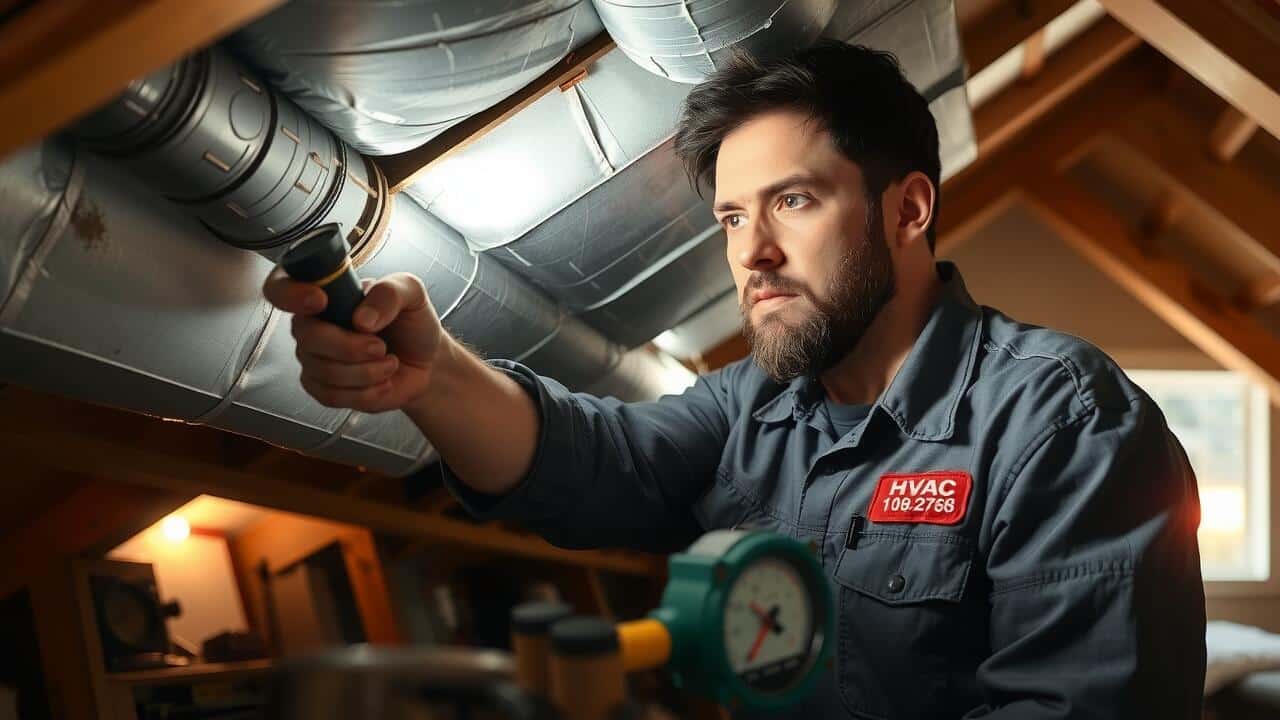
Table Of Contents
Issues with the HVAC System
A malfunctioning HVAC system can lead to a range of issues that prevent air from flowing effectively through ducts. One common problem is a malfunctioning blower motor. If the blower motor isn’t operating properly, it won’t push air through the ducts as intended. This could result from electrical issues, worn out components, or even improper installation. Air Duct Troubleshooting in this situation involves checking the motor for operation and ensuring it’s receiving the correct voltage.
Another potential issue within the HVAC system might be related to dirty or clogged filters. When filters become obstructed with dust and debris, airflow decreases significantly. The system works harder, leading to further complications and inefficiencies. Regular maintenance, including the replacement of filters, can prevent these problems from developing. Effective Air Duct Troubleshooting in this area can ensure consistent airflow and system reliability.
Malfunctioning Blower Motor
A malfunctioning blower motor can significantly impact the airflow within your HVAC system. This component is responsible for pushing air through the ductwork and into your living spaces. If the motor is not operating correctly, it can lead to weak or inconsistent airflow, making your home feel uncomfortable and increasing energy costs. Regular maintenance can help identify potential blower motor issues before they escalate into larger problems.
Air Duct Troubleshooting in this area often involves checking for unusual noises or vibrations when the HVAC system is running. These signs may indicate that the motor is struggling or has developed faults. In some cases, a simple cleaning or adjustment is sufficient to restore functionality. However, severe damage may require replacement to ensure efficient airflow through the ducts.
Insulation and Sealing
Insulation plays a crucial role in maintaining the efficiency of your HVAC system. Insufficient insulation can lead to energy loss, making it difficult for air to flow through the ducts. When ducts are not properly insulated, conditioned air can escape before it reaches its intended destination. This can result in uneven temperatures throughout your home and may cause your system to work harder, leading to increased energy bills.
Sealing is equally important as it prevents air leaks in the ductwork. Even small gaps can significantly impact airflow. Air duct troubleshooting in this area involves checking for cracks, holes, or loosened connections that may be allowing air to escape. Ensuring that ducts are well-sealed not only improves efficiency but also enhances the overall comfort of your living space.
Insufficient Insulation Affecting Airflow
Insufficient insulation can cause significant airflow issues within an HVAC system. When ducts lack proper insulation, they may lose temperature control, leading to heated or cooled air escaping into unconditioned spaces. This can reduce the efficiency of the system, forcing the blower to work harder to maintain desired temperatures. As a result, homeowners may notice uneven heating or cooling throughout their living areas.
In Air Duct Troubleshooting, addressing insulation gaps is a critical step. Ensuring that ductwork is well-insulated can help maintain consistent airflow. Additionally, this can prevent energy loss, promoting a more efficient system overall. Inspecting crawl spaces, attics, and walls for proper insulation levels can help identify areas in need of improvement.
Vent Placement
The placement of vents plays a crucial role in the overall effectiveness of your HVAC system. If vents are positioned poorly, areas of the home may receive inadequate airflow, leading to uncomfortable temperatures and increased energy consumption. This issue often arises when vents are blocked by furniture or other obstructions. Proper vent placement ensures that conditioned air is evenly distributed throughout the space, allowing for optimal comfort and efficiency.
In addition to placement, the design of your ductwork can influence air distribution. Long or convoluted duct runs may hinder airflow, which can be exacerbated by bends or turns in the ducting. Effective air duct troubleshooting in conjunction with the right vent placement can significantly improve performance. Assessing both factors will help identify and resolve air circulation issues, ensuring that every room in your home can enjoy consistent temperature control.
Improperly Located Vents
Vent placement plays a crucial role in the efficient circulation of air throughout a space. If vents are positioned incorrectly, they may not distribute air properly, leading to stagnation or uneven heating and cooling. For instance, vents located too close to walls or furniture can obstruct airflow, while others in less frequented areas might not provide adequate comfort to occupants. Analyzing the strategic positioning of vents is essential for optimal performance.
Air Duct Troubleshooting in relation to vent placement should focus on ensuring that each vent has clear access to airflow. In some cases, relocating vents to a more favorable area can significantly enhance air circulation. Homeowners may also consider adjusting the direction of floor vents or using vent covers that can redirect airflow efficiently. Properly aligned vents contribute significantly to the overall performance of the HVAC system.
FAQS
What are common reasons for air not flowing through my ducts?
Common reasons for lack of airflow include a malfunctioning blower motor, insufficient insulation, and improperly located vents.
How can I tell if my blower motor is malfunctioning?
Signs of a malfunctioning blower motor include strange noises, the unit not turning on, or weak airflow despite the HVAC system running.
How does insufficient insulation affect airflow in my ducts?
Insufficient insulation can lead to heat loss or gain in the ducts, causing the air to lose its intended temperature and reducing overall airflow efficiency.
What should I do if my vents are improperly located?
If vents are improperly located, consider consulting an HVAC professional who can assess the situation and recommend solutions, such as relocating vents for better airflow.
Is it possible for my ducts to be blocked?
Yes, blockages can occur due to debris, dust buildup, or even critters in the ducts, which can significantly hinder airflow. Regular maintenance can help prevent this issue.
